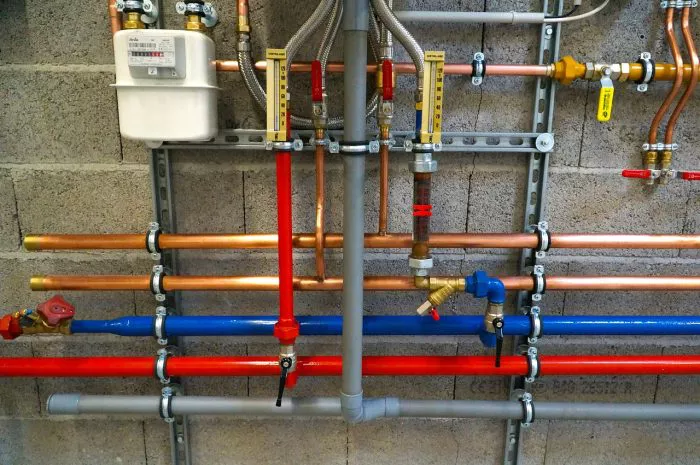PEX pipe, short for cross-linked polyethylene pipe, has revolutionized plumbing and heating systems in modern construction. Unlike traditional metal or rigid plastic pipes, PEX offers flexibility, durability, and ease of installation. Understanding what PEX pipe is and how it benefits various applications can help homeowners and professionals make informed decisions about their plumbing systems.
Composition and Structure of PEX Pipe
PEX pipe is made from polyethylene that has been chemically cross-linked to enhance its properties. This cross-linking process improves the pipe’s strength, flexibility, and resistance to temperature extremes. The result is a pipe that can bend and stretch without breaking, making it ideal for a variety of plumbing and heating applications.
Advantages of Using PEX Pipe
Flexibility and Ease of Installation
One of the most significant advantages of PEX pipe is its flexibility. Unlike rigid pipes, PEX can be easily bent around corners and obstacles without the need for additional fittings. This flexibility reduces the time and labor required for installation, especially in complex plumbing systems. Additionally, PEX can be snaked into walls and ceilings with minimal effort, simplifying the installation process.
Resistance to Corrosion and Scale Buildup
PEX pipes are highly resistant to corrosion and scale buildup. Traditional metal pipes, such as copper, are susceptible to corrosion and can degrade over time, especially in areas with hard water. PEX, however, is immune to these issues, ensuring a longer lifespan and consistent water flow. This resistance to corrosion also means that PEX pipes do not require the same level of maintenance as their metal counterparts.
Thermal Insulation Properties
PEX pipes have inherent thermal insulation properties, which can help reduce energy costs. The pipe material helps to maintain the temperature of the water flowing through it, minimizing heat loss in hot water systems and preventing freezing in cold climates. This can lead to more efficient heating and cooling systems and lower energy bills.
Ease of Expansion and Contraction
Due to its flexibility, PEX can expand and contract with changes in temperature. This property makes it less likely to burst in freezing conditions compared to rigid pipes. In addition, PEX’s ability to handle temperature fluctuations without damage extends its durability and reliability.
See also: What Is A Brad Nailer? Everthing You Nedd To Know
Applications of PEX Pipe
Residential Plumbing
PEX is widely used in residential plumbing systems for both hot and cold water supply lines. Its flexibility makes it ideal for retrofitting existing systems and installing new ones. PEX can also be used for radiant floor heating systems, where it is laid out in loops beneath the floor to provide even heat distribution.
Commercial and Industrial Use
Beyond residential applications, PEX pipe is increasingly used in commercial and industrial settings. Its resistance to corrosion and scale buildup makes it suitable for a variety of commercial plumbing and heating systems. In industrial settings, PEX is used for applications that require flexible and durable piping solutions.
Hydronic Heating Systems
PEX is a popular choice for hydronic heating systems, where hot water is circulated through pipes to provide heating. The flexibility of PEX allows for easy installation of complex piping networks, and its thermal insulation properties enhance the efficiency of the heating system.
Installation Considerations for PEX Pipe
Fittings and Connections
PEX pipe requires specific fittings and connectors to ensure a secure and leak-free installation. There are several types of fittings available, including crimp, clamp, and push-fit connections. Each type has its advantages and installation requirements, so it is essential to choose the appropriate fittings for the project.
Expansion and Contraction
While PEX is designed to handle temperature changes, it is important to account for expansion and contraction during installation. Proper spacing and support must be provided to accommodate the pipe’s movement and prevent stress on the connections.
Code Compliance
Building codes and regulations vary by location, and it is crucial to ensure that PEX installations comply with local standards. Some areas may have specific requirements for the use of PEX pipe, including insulation, support spacing, and installation practices.
Conclusion
PEX pipe is a versatile and reliable choice for modern plumbing and heating systems. Its flexibility, resistance to corrosion, and ease of installation make it an attractive option for both residential and commercial applications. By understanding the benefits and installation considerations of PEX pipe, homeowners and professionals can make informed decisions and enjoy the advantages of this innovative piping material.
Related Topics:
-
Makita Drill Performance Analysis: What You Need To Know Before Buying
-
EGO 56V Battery Review: Powering Up Your Outdoor Tools With Efficiency
-
Top 5 Laser Tape Measures Of 2024: Performance Reviews And Recommendations

